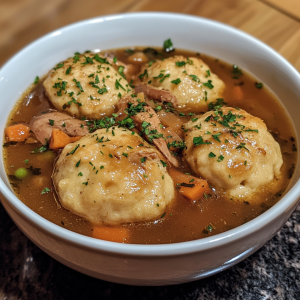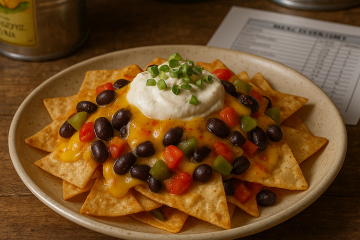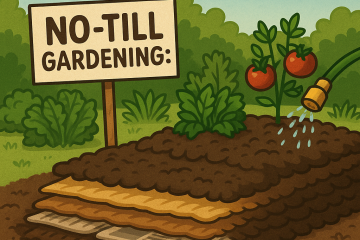
Canadian Rabbit and Dumpling Stew Recipe
With today’s escalating meat prices, I thought it would be timely to share an alternative protein source that you can easily raise yourself just about anywhere, with only 10 minutes a day of effort, and at a minimal amount of expense–Rabbits!
Rabbit meat can be used in the same manner as chicken, even going so far as frying it as you could chicken. It’s also a great source of high protein and low fat, even more important in the present economic stage. Rabbits are very inexpensive to raise, and in addition to the food source they provide, they also have great pelts that can meet several crucial clothing and shelter needs.
As few as 4 breeding females and one breeding male will give you enough rabbit meat for two fryers per week which is plenty for a family of four, including leftovers to use for 2 other meals.
Rabbits don’t eat you out of house and home; they are relatively ordorless and quiet (except when it comes time to make them your dinner.) For those who like to push the envelope a bit in residential areas, rabbits are one of the few that you can likely produce right under the noses of the busy-body tattling neighbors or HOA voyeurs.
Meat from domesticated rabbits is high in protein and low in fat. In fact, rabbit meat has long been recommended by doctors to benefit patients with cholesterol and other coronary heart issues. Unlike cattle and chickens, rabbits are an ideal project for young children to be involved with as it teaches responsibility and helps to develop the mindset of raising livestock for the purposes of food. Unlike a new puppy, rabbit raising can require as little as a dozen hours per year or less than 10 minutes per day. (Well, other than dealing with the mean females, males throwing urine around, and cannibalism–you know, other than that it only takes 10 minutes a day. *grimace*–thanks for reminding me of the not so good stuff, Stephanie.) As a bonus benefit, the manure from rabbits is great for the garden and also attracts ideal bait worms for fishing! Even their urine (if you can capture it, that is) is great for getting citrus plants and trees to produce more abundantly. Did I mention that raising rabbits is low cost especially in consideration of the food you get in exchange for your efforts? It’s also SO easy and affordable to raise rabbits organically, leveraging the value of their food production that much more.
There’s also a great deal that can be done with the rabbit pelts. Tanning their hides is relatively simple as it requires very little time and effort. Angora rabbits have even longer hair on their pelts and provide additional uses as a result. You’ve probably heard the poem “Bye, baby Bunting. Daddy’s gone a hunting, To get a little rabbit skin To wrap his baby Bunting in.” Yup, rabbit blankets are wonderful. As are rabbit slippers, hats, and bags/purses. In earlier times, rabbit pelts were use repeatedly as diapers. They also make excellent seat covers.
For those who just can’t fathom owning a firearm, you don’t need one to kill rabbits as they can be readied for dinner with a heavy hit to the back of the head.
There is one downside to rabbit meat though. You won’t be able to eat it exclusively because of its low fat content. It does not contain sufficient EFAs (essential fatty acids). Our bodies actually NEED EFAs (essential fatty acids) to function properly and rabbit meat is notably lacking in that. So each time you prepare a meal using rabbit meat, be sure that you add necessary fat into the meal and by all means try to mix and match your protein sources. In Morroco, rabbits are commonly served with raisins and almonds along with a lot of butter, coconut oil, or olive oil because of the fat content that the almonds and oils bring to the dish.
Now, having gone over thee brief Rabbit 101 course, here’s a great recipe that favored in Canada. It showed up in a Mother Earth News edition in 1977. It’s guaranteed to stick to you ribs and satisfy. I’ve also enjoyed rabbit chowder, rabbit pot pies, and rabbit sausage. Enjoy!
Canadian Rabbit and Dumplings Stew
1 large, whole rabbit
1 quart of water
2 T. cornstarch
6 sliced carrots (med.)
6 potatoes, diced (med.)
1 cup of whole kernel corn (canned, frozen, or freeze-dried is fine)
1 cup green peas (freeze-dried is preferred, but frozen or canned is fine)
1 cup wax beans or green beans, cut to about 1-2 inch pieces
1 onion, chopped (med.)
1 cup diced celery (freeze-dried is fine)
1 bay leaf
Salt and fresh ground pepper to taste
Dumplings (see below)
Boil the rabbit in the water until its meat is tender (I love using my pressure cooker for this stage as it only requires a small fraction of the water and only requires about 10 minutes for beautifully tender rabbit meat which then makes it so easy to debone with just a couple of forks and vey little physical effort. The broth that’s created this way is sooooo hearty too so you want to make sure you end up with at least 2 cups for the rest of the recipe)
Debone the rabbit and place it into a large stew pot.
Add 2 cups of the broth to the pot and bring to a boil.
Retrieve ¼ cup of the broth and mix it in a separate bowl with the cornstarch. Once all of the lumps are gone and the cornstarch resembles a smooth cream sauce then add it to the boiling broth in the pot. Allow the contents to boil for 2 minutes and then turn down the heat to medium-high so that the stew simmers.
Add all of the remaining ingredients to the pot and cook for approximately 10 minutes.
Dumplings
1 cup flour
1 ½ teaspoons baking powder
½ teaspoon salt
2 tablespoons of cold shortening
¼ to ½ cup of milk (the less you use, the better)
Sift the dry ingredients together into a bowl and then cut in the cold shortening with a pastry blender until the mixture resembles coarse meal. Add the milk all at once, stir lightly until the dough holds together. Gently drop rounded tablespoons of the mixture on top of the hot, simmering stew. Let the dumplings cook uncovered for ten minutes then cove and let them cook for ten minutes longer. The steam should fluff up the dumplings nicely.
I like serving this with cranberry relish on the side. It’s a beautiful balance.



20 Comments
suzie queue · July 28, 2012 at 1:37 am
So glad you wrote this article about rabbits. I used to eat both tame and wild rabbit until my sources dried up. Tame rabbit is white meat and wild rabbit is dark. There used to be a neighbor who would shoot rabbits in his field and bring them to me in a bread sack and leave them on my front porch. What a nice surprise to find a nice big rabbit on my porch when I came home from work. I would clean it outside and freeze it for later. One year I had so many, I started making rabbit pot pies and bringing them in to work for a different treat for my co-workers. This was a big hit at Easter.
I also remember my grandmother raising rabbits in town (a small Indiana town) in cages stacked up against her house. She would raise rabbits and banty hens and would sell the rabbits and eggs to the general store.
At one time, the Kroger stores sold tame rabbit (boxed) in the frozen meat section of the store, but discontinued it. I have requested it several times since, but they say there is no market for them, so they won’t resume selling them.
You are correct about rabbit being all protein and no fat and needing fat as an accompanyment; however, it is only a problem in a survival situation. Known as protein poisoning, a diet exclusively filled with high protein, little or no fat is dangerous. That is why the indians used to kill bears for their fat (besides the meat) and render it and serve bowls of bear fat for dipping lean meat into when they ate. It alleviated any problems with protein poisoning.
I hope your article will still up an interest in rabbit meat consumption. Both tame and wild rabbit is delicious.
Kellene Bishop · July 28, 2012 at 1:40 am
EVERY DAY is a survival situation in my book. 🙂
Lynn · July 28, 2012 at 8:15 am
Aww..this sure does bring back memories. I grew up on a rabbit “farm”. My parents raised 100’s of them. The meat was what we survived on over the winter. Unfortunately, I never got the hang of skinning or cleaning them out. And Sadly, I quickly learned to not tell me friends what they were eating for dinner …Lovers of Thumper they were. However…..it proves one thing….rabbit meat {domesticated anyway} certainly DOES taste like chicken in whatever chicken dish it’s substituted for. That I KNOW for sure.
countrygirl · July 28, 2012 at 3:45 pm
Can’t wait to try the recipe. I love rabbit, although I don’t breed them we get quiet a few wild ones.
suzie – all rabbits have white meat. Hares have dark meat. I found this out after I got a hare this winter and it was huge, I was thrilled because I love rabbit meat. When I butchered it I realized it was a dark red meat, then I did some reading and asking around and found out the difference.
Stephanie · July 28, 2012 at 4:24 pm
We raised them for many years but finally sold them all off as it was too hands on. I agree with everything said in your article except the part about it taking 10 minutes a day of effort. Maybe 10 minutes to feed and water one rabbit but if you plan to breed, feed and raise there is a lot of things involved. I do not miss mean females, males throwing their urine, snuffles, cannibalism, etc but I do miss those cute little babies, rabbit stew and making rabbit skin blankets. Now I buy my rabbit from the folks who bought my rabbits! They have a ton of kids and have a lot more help than we did..LOL!
Kellene Bishop · July 29, 2012 at 1:15 am
Dang Stephanie, you just reminded me what I DIDN’T like about raising rabbits when I was little. I might have to adjust my article now. Sometimes being forgetful is a good thing. 🙂
Doris Gruber · July 28, 2012 at 5:08 pm
My Dad raised them for many years. We ate them and loved the meat. Now I am 64 and just bought my first pair. My city-slicker husband is very supportive and helps me take care of them every morning. We are expecting about the 7 th and are very excited. I know I can not get attatched to the little ones and that will be hard not to. The man we bought them from said he would help when it comes to butchering time, and then I have to be tough enough to do it my self next litter. Thanks for your article. How about pigs, we have been throwing that idea around. I have raised them in the past, but that was many years ago. Thanks!
Stephanie · July 28, 2012 at 7:13 pm
I’ve been thinking about pigs too. But they’re so darn destructive. My neighbor down the road put in a concrete pad for his pigs and that put a stop to them appearing in neighboring gardens and cow pastures..LOL! My young friend set pallets around the perimeter of the pen (with plywood on top). I would like to buy one in the spring at the auction then butcher in November. I understand they will weigh out at about 225lbs by then which is about perfect. Kelleen, do you know if pork can be canned safely? I have never tried that other than bacon.
Kellene Bishop · July 29, 2012 at 1:24 am
Absolutely it can be canned. I have just as much pork roast in the pantry as I’ve got chicken–and that’s a LOT. Oh and there are so many beautiful and sophisticated meals you can make with pork too if you know just a few tricks of the trade. I really enjoy it.
charles lawyer · July 30, 2012 at 3:58 am
whats the best way to raise rabbits? had 4 litters and the mom or dad was chewing on and killing the babies. any advice on the hutch?
Stephanie · August 1, 2012 at 7:37 pm
I have heard it said that its a lack of iron which is the reason for the brown salt spools. I don’t know but when we did have rabbits any female that would cannabalize her kits was given 2 more chances, if she failed she was culled. I took precautions to move her to a more isolated area and to not bother her as much as possible. Once she delivered I would turn her box around facing the back of the cage to give her the feeling of being alone. Sometimes it worked sometimes it didn’t. Some old biddies (or young biddies) are just plain mean. I remember one doe that was an excellent mother but tried to bite and scratch you anytime you opened the hutch door. She finally scratched one too many grandkids and I put her in the freezer.
Stephanie · August 1, 2012 at 7:41 pm
PS you shouldn’t have the mom and the dad in the same cage. They should always be separated. Bring the buck to the cage only for breeding. If she is ready she will let him breed. As soon as he has done the deed take him back to his own cage.
Sharon Cundiff · July 28, 2012 at 7:25 pm
Wahoo! So happy to see this plug and wonderful information regarding rabbits as a source of meat. We live in suburbia with an HOA and keep a breeding trio (2 females and 1 male) on a 120’x70′ lot. We have Californian rabbits and those fatten up real quick. In the year that we have had them we have had 4 litters and our freezer is full! We live in Texas so the care is a little more than 10 minutes a day as we keep ice water bottles, misters and fans on them once the temp reaches 90 degrees. Last summer a litter was born the end of May. With triple digits for many months the babies truly suffered. We lost 5 due to heat, despite our methods and full shade. It also took them a month longer to reach 5 lbs, our desired harvesting weight. We decided not to have a litter this summer with our most recent being put up to freezer camp in June. We LOVE, LOVE, LOVE the meat. We have fried, soup with dumplings, crock pot with a mushroom sauce, deviled rabbit, and two days ago we grilled with a Carolina Sauce and homemade coleslaw! We easily could keep another breeding trio, however the thing that stops us from increasing is harvesting. That is the most time consuming task. For 15 rabbits from harvest to freezer camp is a week’s worth of time. Most of the time it’s just me as our son keeps my husband hopping (pun intended!) with his many activities. I can can harvest, skin, gut in 45 minutes and then the carcass spends 3 days on ice in a cooler until the rigamortis stage passes. It then takes me 15 minutes to quarter and package. The most I have ever harvested in one day was 4. Each rabbit always weighs at least 4lbs after it’s dressed. One rabbit provides 4 meals for a family of 3! So yes, we keep, breed, harvest and eat rabbit. And we LOVE it!
Sharon
charles lawyer · July 30, 2012 at 3:56 am
can you explain to me why my rabbits ate at and chewed on the babies.? i had 4 litters and finally gave up. i love rabbit meat and would love to raise them again. any tips on a hutch and what did i do wrong?
Stephanie · August 1, 2012 at 7:39 pm
It’s hot like that in CA too. We even bought one of those canvas covered carports for our rabbitry and set it up with misters, a swamp cooler and some days we still needed the 2 liter bottles of ice. It was so funny to see the rabbits draped over the bottles mid day…LOL!
jl · July 30, 2012 at 6:11 am
My husband makes a fantastic French rabbit stew. I don’t think I could raise rabbits then eat them. Maybe, but I think it might be to hard for me.
Rhona · August 1, 2012 at 4:14 am
When I was growing up we had many rabbits. There were so many it would take an hour to water and an hour to feed. I remember my dad would put a salt disk or a slab of bacon in with the rabbits if they were about to have young. I guess if they had the salt it would prevent them from eating their young.
My favorite part of the rabbit wasn’t the meat but more like the kidneys and the liver. We would all fight over who got the liver. My parents would dredge in flour and then fry and make a gravy with the drippings. This is the best part in my opinion. The liver isn’t as potent as that of beef or chicken.
My parents would also brown the rabbit after dredging in flour and then put vegetables and cream of mushroom soup over it and then cook it dutch oven style. It wasn’t a Sunday unless we had a rabbit for dinner and you would never mom and dad’s house before dad gave you a rabbit to take home.
Gina (Gerber) Brumfield · August 1, 2012 at 4:15 am
I think I’d have to be awfully hungry before I could kill a critter(fur or feathers) for dinner(my husband prob could tho lol), but then I think I could do the rest(dressing etc).
Debra · August 24, 2012 at 1:07 am
I really appreciate this post as raising meat rabbits has almost become a thing of the past. I live in California so I only breed my rabbits in the fall/winter. That way during the hot summer months I’m only “icing” 2 females and my buck. It took me several months to find a buck but I am happy with him (he’s a White New Zealand). Recently butchered 7 rabbits with my husbands help and we were done in about 3 hours. It’s cheaper to raise rabbits if you butcher them out at about 3 months. You get the greatest feed to meat ratio by two months of age.
mark · August 26, 2012 at 10:07 pm
I used to help my uncle ,who raised belgian hares and rabbits,I would have to butcher them bcause my younger cousins would call him killer if he did it .He also raised pigs and a few other animals but the rabbits were by far the easiest
my aunt made a great stuffed rabbit with cornbread and sausage filling .
Comments are closed.